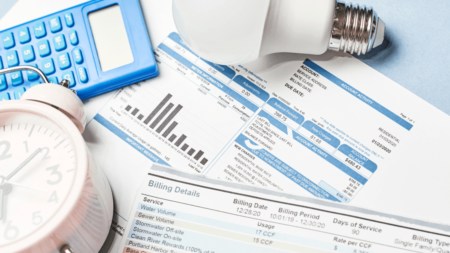A little over a decade ago, you needed an agent to help you send money. This means you had to hand over the cash at an agent location, and the receiver also had to collect it from an agent at their end. However, with the advent of smartphones and the internet, sending money and making purchases has been made easy.
You can send and receive money almost immediately without leaving the comfort of your house. This is where a mobile wallet comes in. Mobile and e-wallets are getting prominent as it is gradually taking over the conventional way of sending money.
A mobile wallet protects your money from outsiders. It helps users store their payment information such as credit/debit cards, and cash balance details, etc., which you can use to carry out transactions.
What is a Mobile Wallet?
A mobile wallet, also known as a digital wallet, is an application on your mobile device that keeps track of your payment data. It is similar to your everyday wallet, where you retain your credit, debit, and paid cards.
The significant difference is a mobile wallet is encrypted, and you are using your phone. When making a purchase, the merchant’s point of sale (POS) machine will use the data from your phone to initiate and complete payment.
To safeguard and protect your data against theft, mobile wallets are designed on encrypted software accessible via mobile apps. Mobile wallets leverage the data on your bank account to produce an accurate check on your funds.
A mobile wallet can be likened to a traditional wallet as it stores currency that you can use to make payments and purchases. The significant difference between the two methods is the form of money.
Use of Mobile Wallet
Mobile wallets come in handy in several ways. You can use a mobile wallet in Canada for the following:
- Transfer money
- Recharge your mobile account
- Buy data packs
- Book train, airline, and bus tickets
- Track your money expenses
- Save money
- Make utility and bill payments.
Types of Mobile Wallets
Mobile wallets have different types. Generally, it is categorized into three parts. They include:
- Closed mobile wallet
Closed mobile wallets are connected to a merchant or private company. This enables you to make direct purchases from a specific merchant with the money in the wallet. Note that you cannot transfer money from these wallets to your bank accounts. The money is strictly for direct purchases; Amazon Pay is an example of a closed mobile wallet in Canada.
- Semi-closed mobile wallet
A semi-closed mobile wallet gives you access to multiple merchants. This is valid only when you have a contract with the payment portal.
Unlike a close mobile wallet where you cannot receive money into your bank account, a semi-closed wallet offers this service. However, you cannot withdraw any money you send into your bank account as cash. Paytm is an example of a semi-closed mobile wallet in Canada.
- Open Mobile Wallet
Unlike the wallets mentioned above, open mobile wallets are issued directly by a bank or a third-party issuer. You can use the money in an open wallet for any transaction. Also, you can withdraw the funds transferred to their account in cash. An example of an open mobile wallet in Canada is PayPal.
Transferring money to a Mobile Wallet
You can send money to your mobile wallet by downloading the mobile wallet app and installing it. Ensure that receiver of the funds has a mobile wallet set up on their phone.
You’ll need the receiver’s mobile number and the amount you want to send. Once these details are inputted and click on send, the money is instantly sent into the receiver’s wallet.
Note that every time you make a transaction from your mobile wallet, the merchant receives a notification about the payment. Once the merchant authorizes the payment, the money is instantly forwarded from your wallet to the merchant’s bank account.
How a Mobile Wallet works in Canada
Most people get confused when it’s time to fund their mobile wallets. So, we’ll be taking you on a short trip on the basic steps to fund your account.
Once you’ve installed your mobile wallet app, you will need to add your credit/debit cards to your created wallet. Most mobile wallets allow you to add loyalty and gift cards; some go as far as allowing you to add concert tickets and boarding passes.
The next step after successfully adding all your cards to your e-wallet is to select a default card. This is the card that will automatically appear when you want to make a purchase or a transaction. You can easily change your preferred card or switch between cards within your mobile apps when shopping.
When making a purchase, all you need to do is hold your phone. Ensure it is unlocked up to a contactless terminal. The method of payment for purchase is similar to when you tap a credit card.
Generally, you can use your mobile payment app anywhere you see the contactless symbol. The next step is to transfer the funds via an agent, internet banking, or a debit or credit card into your mobile app wallet.
Once this is successful, the mobile wallet company sends the fund to an escrow account until confirmation/authorization is received from the merchant.
Pros of Sending Funds to a Mobile Wallet
There are several benefits of sending money to a mobile wallet in Canada. Some of them include:
- Hassle-free process
The process is swift and hassle-free, making life easier for both the sender and receiver. You don’t have to go to an agent to send funds; likewise, the receiver doesn’t have to travel to an agent to receive the money.
- Funds can be used immediately.
You don’t have to wait until you get the physical cash before using the money in your wallet. You can use the funds to pay for bills or make purchases once you receive them in your wallet.
- Safe and Secured
You don’t have to worry about theft with a mobile wallet as it is protected in an encrypted account. Hence, no sensitive details like your bank data can be hacked. Your mobile wallet is password-protected, and only you know the details of the password. Ensure not to compromise the details of your password to avoid scammer using your details.
- User-friendly
Mobile wallets are extremely user-friendly ad easy to use. You can carry out any transactions with a click of a button, anywhere and everywhere.
Are Mobile Wallets Safe?
Yes, mobile wallets are arguably more secured than conventional wallets. The data stored on your device are encrypted and locked using some form of authentication.
These authentications mostly come in the form of a passcode, password, or biometric identifications like fingerprints and Face ID. Even if you lose your phone, whoever finds it will be unable to access your payment details as they won’t unlock your mobile wallet. Also, with high-grade encryption, it is impossible to hack into your wallet.
Mobile wallets available in Canada
Below are some of the mobile wallets available in Canada:
- Apple Pay Canada
- Google Pay Canada
- Starbucks Canada
- Ali Pay
- Samsung Pay Canada
- Fitbit Pay
- PayPal Canada
- Garmin Pay












